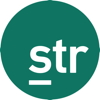

Global Performance
At 70.3%, global occupancy (excl U.S) was the highest since March 2020. Weekly ADR (US$146) increased 15% YoY with RevPAR up 30% to US$103, which was its first time above US$100 on record.
Looking at the top 10 countries, based on supply, occupancy reached was 72.4%, also the highest level since the start of the pandemic and more than 10ppts higher than the comparable week last year. The gain in occupancy was largely driven by China (+22.4ppts) and Japan (+12.5ppts). Top 10 ADR increased 14% YoY with RevPAR up 33.5% YoY. RevPAR in China topped 116% YoY with Japan closely behind (+93%). The U.K. continued to lead the group in occupancy (82.6%) followed by Italy (81.5%).
Outside of Asia, Germany also saw positive results versus the comparable week last year up 8.2ppts in occupancy and 16.4% in ADR. Large events have now made a comeback and in the last week Germany has hosted FESPA in Munich (printing exhibition), IMEX in Frankfurt (import – export exhibition) and the beginning of the Carnival of cultures in Berlin.
Outside of the Top 10 countries, Ireland had the world’s highest occupancy at 88.5%, followed by Bermuda (80.9%).
U.S. Performance
Weekly U.S. hotel occupancy (66.8%) exceeded the matched week last year by a slim margin of 0.4 percentage points (ppts) with an expected dip week over week (-0.7ppts) ahead of the Memorial Day holiday. While generally unchanged for the week, there were changes by day of week pointing to stronger mid-week occupancy and softer weekend occupancy compared to last year.
- Weekday (Monday – Wednesday) occupancy increased 2ppts to 65.8% year over year (YoY), the sixth weekly consecutive gain.
- Weekend (Friday/Saturday) occupancy (76.6%) dropped 1.5 ppts YoY, following a pattern of declines seen in five of the past six weeks.
- Shoulder (Sunday/Thursday) occupancy (58.4%) was essentially unchanged (-0.1 ppts YoY).
Average daily rate (ADR) increased 2.2% YoY to US$157 but declined 1.2% week on week. The softness in weekly ADR is due in part to the change in the day of week mix. Mid-week and shoulder period ADR is historically lower than weekend ADR, so the higher mid-week demand relative to the weekend demand impacts ADR. Additionally, when adjusted for inflation, ADR and RevPAR are in arrears to 2019 and below last year’s levels. Revenue per available room (RevPAR) increased 2.9% YoY to US$105.
U.S. Markets
Occupancy in the Top 25 Markets reached 72.3%, up 0.6 ppts YoY but down 1.0 ppts WoW. Top 25 Market occupancy has been above 70% for the past six weeks. Markets outside of the Top 25 performed in the same manner, up 0.3 ppts YoY to 63.8%, but down 0.6 ppt WoW.
Top 25 ADR increased 2.7% YoY to US$186, while all other markets experienced a slightly smaller increase (+1.7%) to US$139.
Weekday occupancy for the Top 25 Markets increased 2.3 ppts YoY to 71.6%, while weekend occupancy declined 1.1 ppts to 80.9%. This same trend was seen outside the Top 25 Markets with Monday through Wednesday occupancy (62.7%) increasing 1.8 ppts YoY and weekend occupancy (74.2%) declining 1.7 ppts YoY.
As seen over the past couple weeks, graduations, concerts, and sporting events continue to impact individual markets.
- New York City topped the occupancy chart at 85.7%, ranking first among the Top 25 for the eighth straight week. And for the fifth week in a row, New York also led the nation in occupancy. In addition to strong leisure demand, the Lightfair International architectural expo boosted performance along with the Taylor Swift tour taking place in nearby New Jersey. This notable tour sweeping the country had an even greater impact on the New Jersey markets with the Newark market achieving its highest weekly occupancy since the start of the pandemic.
- Boston (83.2%) earned high occupancy this week helped in part by several college graduations, including Harvard, Boston College, and Boston University.
- Las Vegas with weekly occupancy of 81.2% continued to feel the impact of the previous weekend’s EDC (Electric Daisy Carnival). Occupancy over the Memorial Day weekend rose to 90.7%.
- Oahu rounded out the list of Top 25 Markets above 80% occupancy at 80.1%. In total, four Top 25 Markets posted occupancy above 80%, which was one more than a year ago.
- Detroit and Washington, D.C. both saw occupancy increase by more than 6ppts YoY, resulting in RevPAR increases of +29% and +27.2%, respectively.
- Indianapolis, host of the Indianapolis 500, posted weekend occupancy of 86.5%, down -0.8ppts YoY with ADR increasing 5.1% YoY to US$239.
Final thoughts
U.S. and global results point to more normal patterns. Graduations, concerts, and sporting events are driving market-level performance while leisure travel in general remains strong. Group is slowing as spring convention seasons wanes, and business/corporate improves with continuing gains in weekday occupancy. ADR remained firmly grounded with positive annual gains, although the rate of ADR and RevPAR growth is moderating and will continue to do so.
Looking ahead
Expect the next dataset, for the week ending 3 June, to be down given the Memorial Day holiday leading to a weaker Tuesday and Wednesday. Data from Forward STAR shows continued growth for the top markets during the summer period (the next 90 days). These markets will also drive most of the performance measures, based on the updated STR forecast for the remainder of the year. That forecast will be presented at the NYU Conference this coming week.